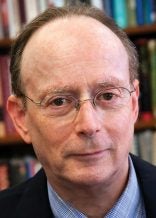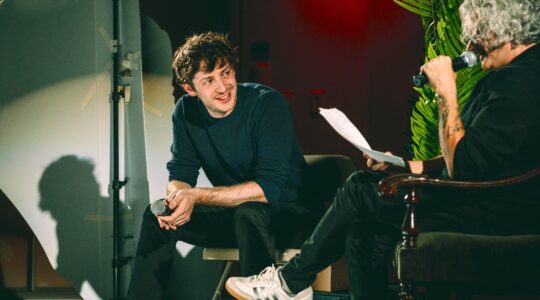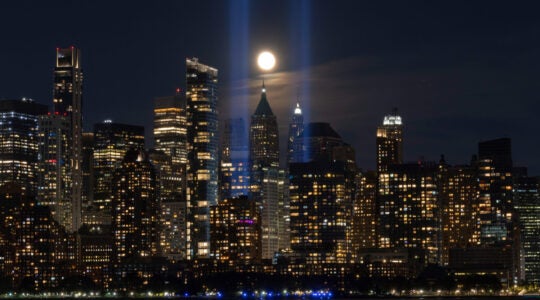Sixteen years later, I can still hear the sudden gasp, followed by a loud, spontaneous and mournful wail that erupted from the thousands gathered outside 770 Eastern Parkway in Brooklyn when the simple wooden casket carrying the remains of the Lubavitcher Rebbe, Menachem Mendel Schneerson, emerged from the movement’s headquarters on June 12, 1994, corresponding to the third of Tammuz (this coming Tuesday).
As the funeral cortege made its way slowly down the street, some in the crowd chanted a by then familiar Hebrew phrase that proclaimed the rebbe to be the King Moshiach.
The disconnect seemed palpable — praise for a living messiah even as their leader’s body was being taken to the cemetery.
For non-chasidim, the death of the seventh and presumably last leader of Chabad Lubavitch, who was childless and left no successor, indicated that the chasidic dynasty would soon wane, its charismatic leader no longer available to teach, protect and inspire his followers.
But the reality is that Chabad is, if anything, a more powerful force in Jewish life today than it was then. It is the largest, and arguably wealthiest and most successful international Jewish organization in the world, with some 4,000 full-time shluchim (or emissaries, usually young married couples) based in 76 countries. They can be found in communities and outposts around the world, from Brooklyn to Timbuktu, providing services to whomever passes through, as well as the local community, and encouraging even the most marginal Jews to perform a mitzvah to hasten the redemption.
It is believed that the number of shluchim has more than doubled since 1994, though many of the young couples who offer to serve with remarkable dedication wherever assigned are too young to remember the rebbe first-hand.
One young emissary living in a small city in Ukraine told me several years ago that the first thing a young couple does on arrival in such outposts is to buy two burial plots in the local cemetery, signifying their lifelong commitment to the cause.
Who was this rebbe whose hold on his followers remains, even from the grave, and whose own life has been enveloped in myth and mystery for decades?
Menachem Mendel Schneerson was born in 1902 in Ukraine, came to America in 1941, and died here in 1994, though even that last fact is disputed by some of his most loyal chasidim, who still believe him to be the moshiach.
During his four-decade reign as rebbe, he revolutionized the concept of global Jewish outreach, influenced government leaders in Israel, the U.S. and elsewhere, and sparked controversy and confusion with his ongoing campaign to bring the moshiach now, taking an ancient, bedrock but abstract element of Jewish theology and making it an immediate, urgent goal.
Though he gave more than 11,000 hours’ worth of public lectures on Torah study and philosophy in his long career, little is known about his inner life.
But two books published this year probe different aspects of the rebbe’s mystique. A biography, entitled “The Rebbe: The Life and Afterlife of Rabbi Menachem Mendel Schneerson,” by sociologists Samuel Heilman and Menachem Friedman, is just out, from Princeton University Press. And Elliot Wolfson, professor of Hebrew and Judaic Studies at New York University and the leading American scholar of the Jewish mystical tradition, has published “Open Secret: Postmessianic Messianism and the Mystical Revision.”
Wolfson’s book is a deep and scholarly exploration of what messianism meant to the rebbe in the chasidic tradition.
“My argument is complicated,” the professor explained in a recent conversation. “I don’t think he believed in a personal redeemer. It’s a rhetorical device for him in the way we look at the world. That’s the open secret.”
Wolfson argues that the rebbe was teaching that each person has the potential to reach an inner state of messianic consciousness. The book does not deal with whether the rebbe thought he was the messiah.
“Even if he did, he didn’t mean it the way we think.
“Within Chabad,” Wolfson added, “my book should be seen as more threatening, more challenging” of the two new works. (One Chabad official told me Wolfson’s theory is “90 percent correct, but 10 percent radically wrong — because the rebbe did believe in a real moshiach” who would lead the Jewish people to Israel and rebuild the Temple.)
But followers of the rebbe have focused their attention, and often anger, at the Heilman-Friedman biography, which provides new details about the rebbe’s life, particularly his early years in Europe, before coming to America to flee the Nazis. It also offers a storyline that suggests his primary focus was to become an electrical engineer, and that it was only on arrival here, approaching the age of 40 and with no job and little English, that he began to focus on succeeding his father-in-law as rebbe.
The book hardly mentions the many volumes of the rebbe’s Torah writings and scholarship, praised for its depth and insights, much of it from the period of his early years in Europe. Critics within Chabad say the biography deliberately distorts and falsifies the rebbe’s life, with the authors picking and choosing data that supports their theory while ignoring reams of material that suggests he was deeply involved with Chabad and immersed in Torah thought, philosophy, writing and teaching all of his life, even in the early years when he pursued secular training.
Heilman took part in a full-house Jewish Week forum last Wednesday evening at the JCC in Manhattan, and when I put those charges to him, he dismissed them by saying that chasidim are less than objective about their rebbes.
He added that as sociologists, he and Friedman, of Bar-Ilan University in Israel, are not Torah scholars and thus did not deal with the rebbe’s wealth of scholarship.
This summer Chabad plans to publish a volume of more than 1,200 documents related to the rebbe, including letters to and from him as well as his notebooks and insights, indicating his constant involvement in Torah study and teaching throughout his life.
But it is likely that the mystique and debate about the rebbe, his life, mission and accomplishments will continue.
What seems clear, though, is that Menachem Mendel Schneerson, while not the messiah, led a life of selfless devotion not only to his chasidim, but to the Jewish people. And he left a lasting legacy, underscoring what one dedicated individual can accomplish, and reminding us all — observant, secular and non-believer — of the unique power we each have to actualize our potential in the service of others.
May his memory be a blessing.
E-mail: Gary@jewishweek.org
Read Gary’s "Between the Lines" blog here, and be sure to check out the Jewish Week’s Facebook page and become a fan!
You can also follow the Jewish Week on Twitter: start here.
The New York Jewish Week brings you the stories behind the headlines, keeping you connected to Jewish life in New York. Help sustain the reporting you trust by donating today.





